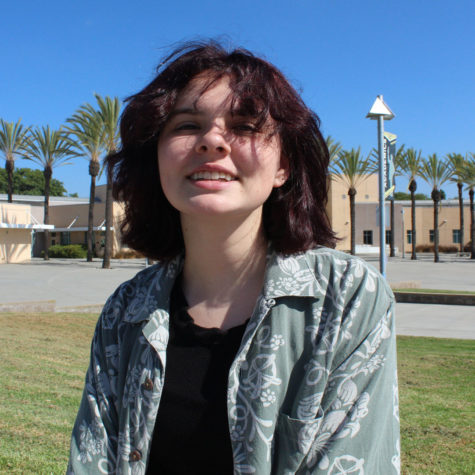Immunocompromised students balance health, educational needs
January 28, 2022
Since birth, Lola Ferguson (10) has suffered from cystic fibrosis. The disease weakens her organs, putting her at risk of developing other complications that could compromise her health.
According to Ferguson, there are measures she has to take in order to protect her health, especially in the wake of COVID-19. She was forced to cut contact from people who weren’t vaccinated because of the danger they posed to her health.
“It hurts sometimes,” Ferguson said. “I remember [people saying] at the beginning of COVID that only 2% die, only 2% get hurt, but 2% of the population of the world is about 14 million people. I could be one of those 14 million people, and they just don’t care. They don’t see that their actions affect others.”
Ferguson chose to stay home for two weeks following winter break to avoid the virus surges. Her teachers, she said, were supportive and provided accommodations to help her keep up with classwork while she was at home.
“Some teachers shared their screen and they’d Zoom with me during class so I could hear them give the lesson and I could take notes during it,” Ferguson said. “There’s some that just made sure that they posted every assignment on Canvas so that I could access it easily and have instructions.”
While most of her teachers helped her stay on-track with lessons and homework, Ferguson said she still had problems with communication and getting help from other teachers.
“There’s some that wouldn’t respond [to emails] or they think that I’m fine doing everything virtually,” Ferguson said. “But it’s kind of overwhelming having to miss out on so much and still be expected to do everything perfectly. I really appreciate the [teachers] that actually tried to reach out to figure out if there’s anything more that I need, and they respond to emails quickly, and they add extra instruction and everything like that.”
According to Ferguson, having Zooms and being able to actively participate in class while still being at home made the process a lot easier. However, she said she felt she was still missing out on the in-person experience.
“I’m kind of alone and trying to figure it out,” Ferguson said. “It does feel weird because there are other people in the class having their own conversations, being able to ask each other questions and collaborate.”
Madelynne Mabe (12) is also at a high risk of contracting COVID-19 and other illnesses as a result of a weak immune system. Although she remained in-person for school, she was at home for two weeks after testing positive for COVID-19.
“It was really a shock just completely falling behind and I didn’t really know how to fix it,” Mabe said. “I have had to accommodate all my teachers over my finals. I have a really low grade in one class because I don’t have all my stuff turned in, but it was really hard with all of the side effects that I was feeling [from the virus].”
According to Mabe, she missed being around her peers in the classroom. She said it was harder to complete assignments or have discussions when she was virtual.
“I learn better when I have others to bounce ideas off [of],” Mabe said. “I also learn visually and it’s hard to learn and focus when I don’t have any clear explanations.”
Mabe said she found coping strategies for virtual classes, such as keeping in contact with friends and listening to music.
“I would work on the assignments with my friends just so I could have [the] social experience that in person school gave,” Mabe said. “I also put on music in the background because having that stimulation helped me concentrate.”


